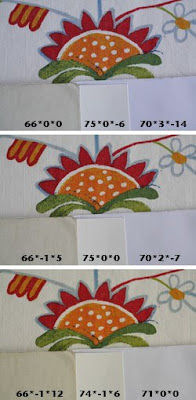By professional photographer René Riis, Spektrum Studios, Denmark. Success in Food & Drinks photography
I believe that you have to be passionate about what you photograph in order to be successful. You have to be able to be fascinated by and see the beauty in different kinds of food from an oyster to salami. Beside that of course, you have to master photographic techniques.
New image style
I use a cook and food stylist for larger assignments to get the right look. We have very few food stylists in Denmark. It is a limited market and the qualified stylists live abroad where the demand is bigger.
Food photography is a bit like fashion photography; the stylists are able to give the images the final touch that makes the difference. Clients and agencies often ask me to recommend a stylist. They each have individual styles, and that style has to match the assignment.
Equipment
I shoot with a Phase One P 20 digital back, using Capture One PRO. Besides that I use Adobe® Photoshop and once in a while I rent a Canon IDs MKII.
Capture One gives me a good overview, it quickly browses through images and I see it as an essential part of my equipment – it is my darkroom. It is crucial that all RAW files are converted to the best image quality. I get that with Capture One.
I use the feature called Styles a lot. It is really nice that you can see the style change immediately on all images. It is much easier to create a new look with the Styles function as inspiration.
Today digital development and improvements are moving unbelievably fast. Still, I cannot recall the last time I had problems with my equipment. It is essential for my work that my digital back is working 100% of the time, especially when I have clients in the studio!
________________________________
Capture One 3.7.6 includes a Live Preview feature.Live Preview gives you instant feedback on your composition and any changes you make to this, when capturing images. With Live Preview you can speed up your work and capture the perfect images quickly, even if your camera is placed inaccessibly.
Live Preview currently supports Phase One's: P 45, P 30 and P 21 digital backs and will be an out-of-the-box feature with all the coming P+ digital backs.
With Capture One 3.7.6 we have also improved the support for Leica M8, Canon 400D/Rebel XTi; Nikon D80 and Sony α (alpha) DSLR-A100.
For specific improvements please refer to the release notes for Capture One.
Download Capture One 3.7.6 and release notes: http://www.phaseone.com/Content/Downloads.aspx
 Custom white balance (CWB) setting for correct gray balance in the camera is a very powerful tool when being used correctly.
Custom white balance (CWB) setting for correct gray balance in the camera is a very powerful tool when being used correctly.


























